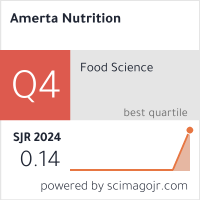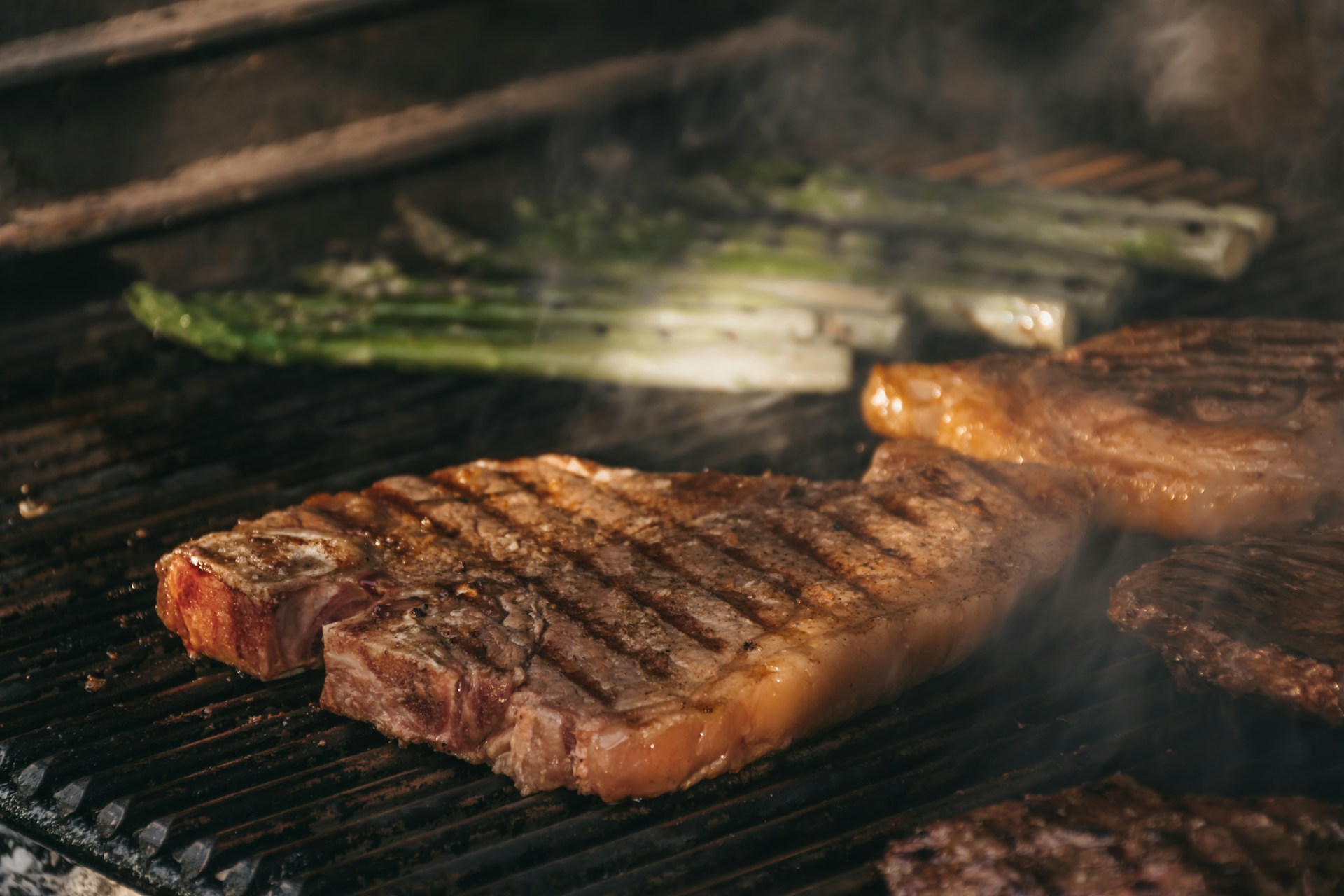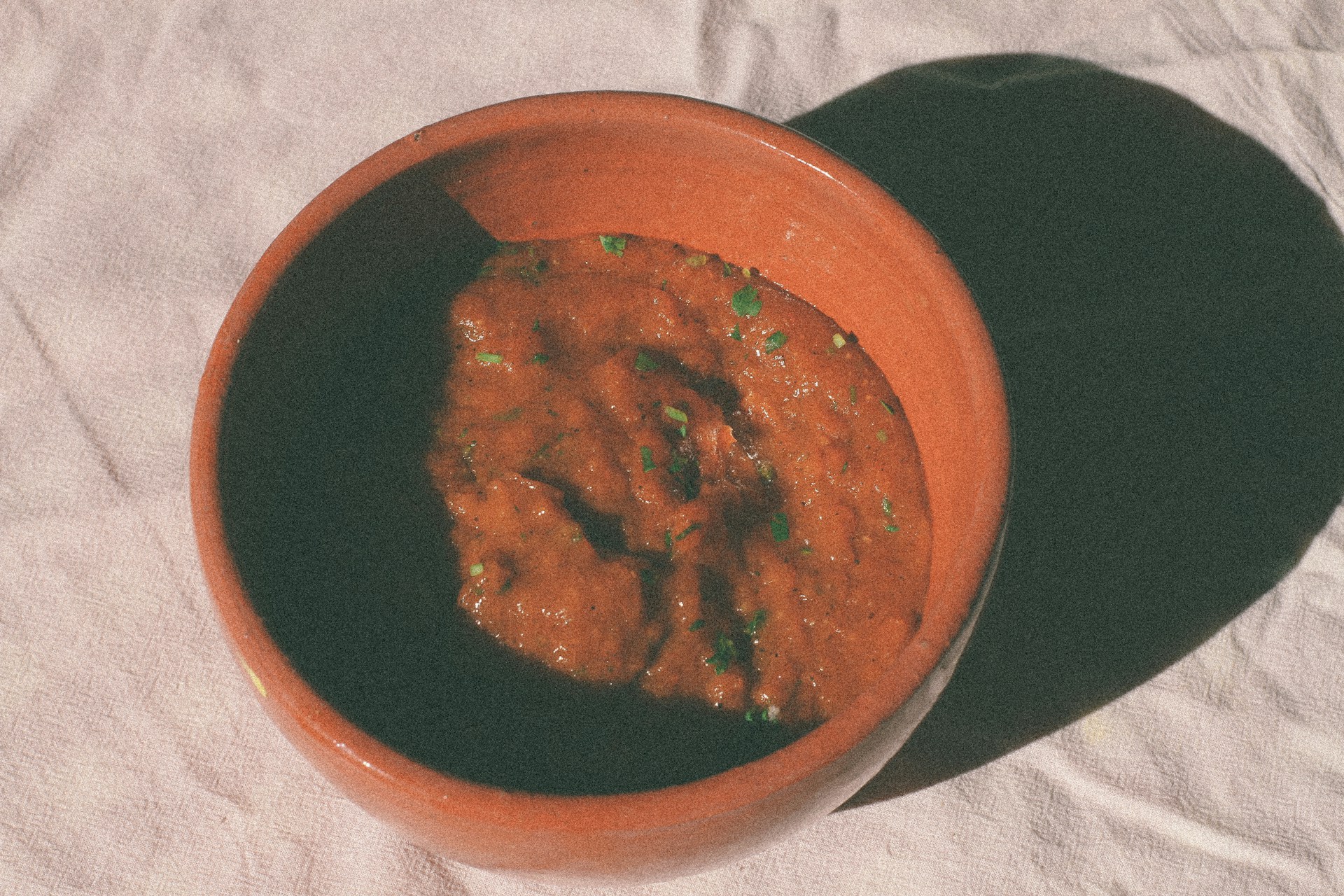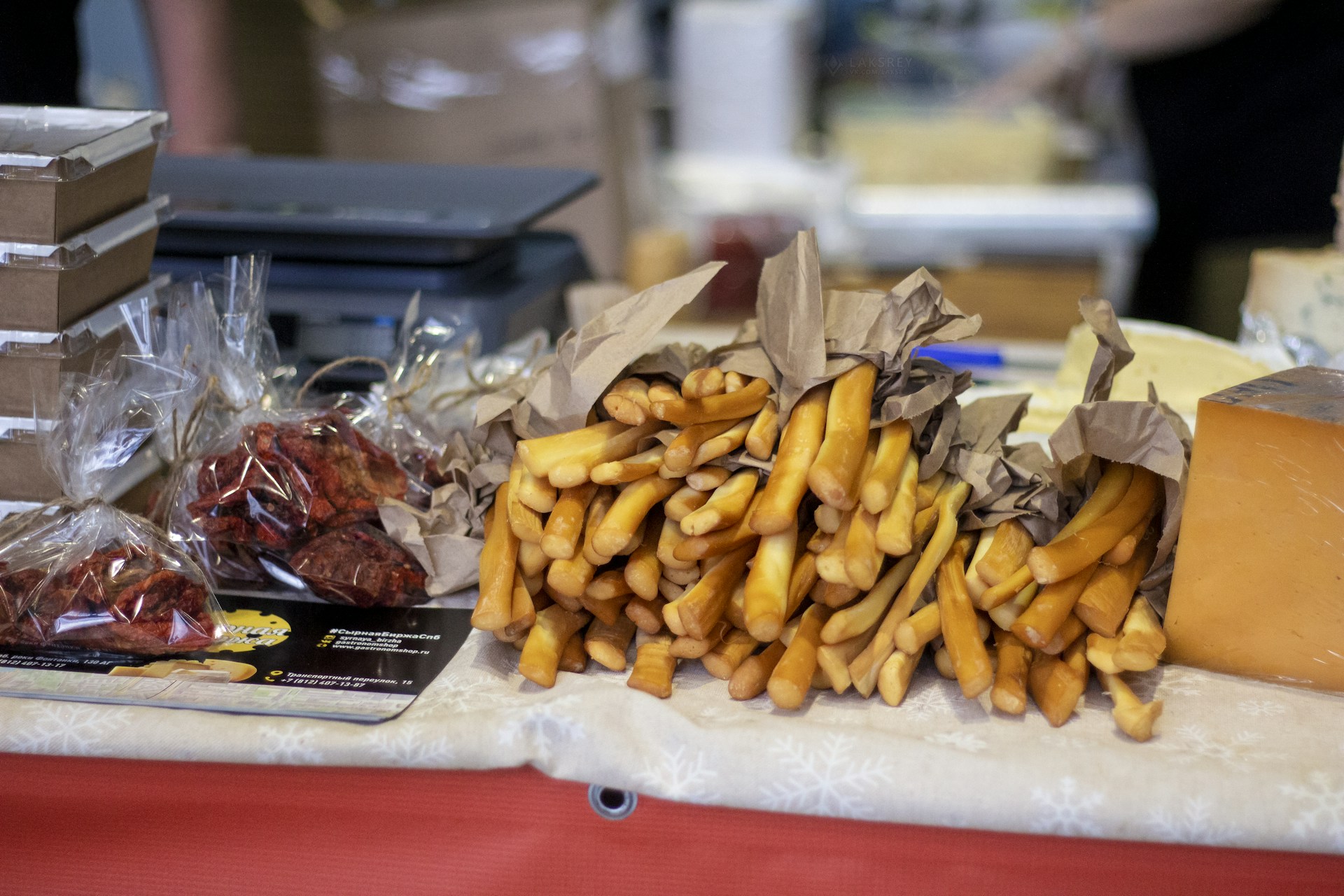Household Food Insecurity, Nutritional Knowledge of Mothers on Nutritional Status among Children Under Five Years in Gili Iyang Island, Indonesia
Hubungan Kerawanan Pangan Rumah Tangga, Pengetahuan Gizi Ibu terhadap Status Gizi Balita di Pulau Gili Iyang, Indonesia
Background: Food insecurity in the home and well-informed moms' nutritional understanding can shield children from circumstances that result in low height and body mass index (BMI) for their age.
Objectives: The purpose of this study is to ascertain the relationship between food insecurity in the home and mothers' nutritional awareness of the nutritional condition of children under five on Gili Iyang Island.
Methods: This study used a cross-sectional method. The nutritional status of the children was assessed using anthropometric measurements. Additionally, data on demographic characteristics, maternal nutrition knowledge, and food insecurity were collected using questionnaires. The study involved 39 mothers/caregivers of children as respondents.
Results: Mothers had a low degree of dietary awareness (84.62%). Stunting and wasting rates were 17.95% and 12.82%, respectively. The incidence of stunting decreased with increased nutritional knowledge of mothers (p-value=0.032, r=0.343), and there was a strong positive association between mothers' knowledge of nutrition and children's height-for-age. Nutritional status (HAZ) and household food security were significantly correlated (p-value<0.001).
Conclusions: The conclusion was that there was an association between the nutritional knowledge of mothers and the status of children’s nutrition. There was a relationship between household food security and a child’s nutritional status.
de Onis, M. et al. Prevalence thresholds for wasting, overweight and stunting in children under 5 years. Public Health Nutr 22, 175–179 (2019). https://doi.org/10.1017/S1368980018002434.
UNICEF. The State of Food Security and Nutrition in the World 2022. Preprint at (2022).
Ministry of Health Indonesia Republic, D. Final Report of Indonesia Basic Health Research 2018 (RISKESDAS 2018). Preprint at (2018).
Ministry of Health Indonesia Republic. Final Report of Indonesian Nutritional Status Survey (SSGI 2022). Preprint at (2022).
UNICEF. UNICEF Conceptual Framework on Maternal and Child Nutrition. (2021).
Awasthi, S., Verma, T., Sanghvi, T. & Frongillo, E. A. Path to Severe Acute Malnutrition in Children Below 2 Years of Age: Findings of Qualitative Research in Uttar Pradesh, North India. Clin Epidemiol Glob Health 7, 246–252 (2019). https://doi.org/10.1016/j.cegh.2018.11.001.
Chowdhury, M. R. K. et al. Risk Factors for Child Malnutrition in Bangladesh: A Multilevel Analysis of a Nationwide Population-Based Survey. J Pediatr 172, 194-201.e1 (2016). https://doi.org/10.1016/j.jpeds.2016.01.023.
Khatun, W., Rasheed, S., Alam, A., Huda, T. M. & Dibley, M. J. Assessing the Intergenerational Linkage between Short Maternal Stature and Under-Five Stunting and Wasting in Bangladesh. Nutrients 11, 1818 (2019). https://doi.org/10.3390/nu11081818.
de Groot, R., Palermo, T., Handa, S., Ragno, L. P. & Peterman, A. Cash Transfers and Child Nutrition: Pathways and Impacts. Development Policy Review 35, 621–643 (2017). https://doi.org/10.1111/dpr.12255.
BRIN. BRIN Emphasizes 5 Things to Realize National Food Security, Sovereignty and Self-Sufficiency. Preprint at (2022).
Impact, E. Global Food Security Index 2022. Preprint at (2022).
Burman, J. et al. Association Between Household Food Insecurity and Nutritional Status Among Children of Age ≪5 Years: A Community-Based Study in A Slum of Kolkata, Eastern India. J Family Med Prim Care 11, 3885 (2022). https://doi.org/10.4103/jfmpc.jfmpc_635_21.
Mahmudiono, T., Nindya, T., Andrias, D., Megatsari, H. & Rosenkranz, R. Household Food Insecurity as a Predictor of Stunted Children and Overweight/Obese Mothers (SCOWT) in Urban Indonesia. Nutrients 10, 535 (2018). https://doi.org/10.3390/nu10050535.
Sumarmi, S., Mahmudiono, T. & Melaniani, S. Household Food Insecurity and Undernutrition in Children Below 5 Years Living in Different Geographical Areas in East Java, Indonesia. Malays J Nutr 24, 529–538 (2018).
Phyo, W. Y., Khin, O. K. & Aung, M. H. Mothers’ Nutritional Knowledge, Self-efficacy, and Practice of Meal Preparation for School-age Children in Yangon, Myanmar. Makara Journal of Health Research 25, 59–68 (2021). https://doi.org/10.7454/msk.v25i1.1262.
Musleh, M., Subianto, A. & Prasita, V. D. Stakeholder Interaction in The Development of Oxygen Ecotourism on Gili Iyang Island, Indonesia. Journal of Government and Civil Society 7, 297 (2023). https://doi.org/10.31000/jgcs.v7i2.8251.
District, B. P. S. S. I. S. Dungkek subdistrict statistics 2021. Preprint at (2021).
Foster, J. S. et al. A Qualitative Investigation into the U.S. Department of Agriculture 18‐item Household Food Security Survey Module: Variations in Interpretation, Understanding and Report by Gender. J Public Aff 19, (2019). https://doi.org/10.1002/pa.1861.
WHO. Training Course on Child Assessment: WHO Child Growth Standards. World Health Organization 7, (2008).
Demilew, Y. M. Factors Associated with Mothers’ Knowledge on Infant and Young Child Feeding Recommendation in Slum Areas of Bahir Dar City, Ethiopia: cross sectional study. BMC Res Notes 10, 1–7 (2017). https://doi.org/10.1186/s13104-017-2510-3.
Debela, B. L., Demmler, K. M., Rischke, R. & Qaim, M. Maternal Nutrition Knowledge and Child Nutritional Outcomes in Urban Kenya. Appetite 116, 518–526 (2017). https://doi.org/10.1016/j.appet.2017.05.042
Fadare, O., Amare, M., Mavrotas, G., Akerele, D. & Ogunniyi, A. Mother’s Nutrition-Related Knowledge and Child Nutrition Outcomes: Empirical Evidence from Nigeria. PLoS One 14, 1–17 (2019). https://doi.org/10.1371/journal.pone.0212775.
Derrickson, J. P., Fisher, A. G. & Anderson, J. E. L. Community and International Nutrition the Core Food Security Module Scale Measure Is Valid and Reliable When Used with Asians and Pacific Islanders 1,2. J. Nutr 130, 2666–2674 (2000). https://doi.org/10.1093/jn/130.11.2666.
Coleman-Jensen, A., Rabbitt, M. P., Gregory, C. & Singh, A. Household Food Security in the United States in 2018. Economic Research Report No. 270. United States Department of Agriculture Economic (2019).
Ngui, R., Lim, Y. A. L., Kin, L. C., Chuen, C. S. & Jaffar, S. Association Between Anaemia, Iron Deficiency Anaemia, Neglected Parasitic Infections and Socioeconomic Factors in Rural Children of West Malaysia. PLoS Negl Trop Dis 6, 1–8 (2012). https://doi.org/10.1371/journal.pntd.0001550.
Adnan, N. & Muniandy, N. D. The relationship Between Mothers’ Educational Level and Feeding Practices Among Children In Selected Kindergartens In Selangor, Malaysia: A Cross-Sectional Study. Asian Journal of Clinical Nutrition vol. 4 39–52 Preprint at https://doi.org/10.3923/ajcn.2012.39.52 (2012). https://doi.org/10.3923/ajcn.2012.39.52.
Ongosi, A. Nutrient Intake and Nutrition Knowledge of Lactating Women (0-6 months postpartum) in a Low Socio-Economic Area in Nairobi, Kenya by Anita Nyaboke Ongosi Submitted in Partial Fulfilment for The Requirement of Master of Science Degree in Human Nutrition in. University of Prectoria 1–198 (2010). http://hdl.handle.net/2263/25935.
Williams, L., Campbell, K., Abbott, G., Crawford, D. & Ball, K. Is Maternal Nutrition Knowledge More Strongly Associated with The Diets of Mothers or Their School-Aged Children? Public Health Nutr 15, 1396–1401 (2012). https://doi.org/10.1017/S1368980011003430.
Shahid, M. et al. Does Mothers’ Awareness of Health and Nutrition Matter? A Case Study of Child Malnutrition in Marginalized Rural Community of Punjab, Pakistan. Front Public Health 10, 1–11 (2022). https://doi.org/10.3389/fpubh.2022.792164.
Drennen, C. R., Coleman, S. M., Ettinger de Cuba, S., Frank, D. A., Chilton, M., Cook, J. T., Cutts, D. B., Heeren, T., Casey, P. H., & Black, M. M. Food Insecurity, Health, and Development in Children Under Age Four Years. Pediatrics 144, (2019). https://doi.org/10.1542/peds.2019-0824.
Mutisya, M., Kandala, N. B., Ngware, M. W. & Kabiru, C. W. Household Food (In)Security and Nutritional Status of Urban Poor Children Aged 6 to 23 Months in Kenya Global health. BMC Public Health 15, 1–10 (2015). https://doi.org/10.1186/s12889-015-2403-0.
Dirghayu, K. C. Ulak, N., Poudyal, A., Shrestha, N., Gautam, N., Ghimire, L., & Paudel, U. Household Food Security Access and Nutritional Status among Early Adolescents in a Poor Neighborhood of Sinamangal, Nepal. Curr Dev Nutr 5, 1–7 (2021). https://doi.org/10.1093/cdn/nzab127.
Fafard St-Germain, A. A. & Siddiqi, A. The Relation between Household Food Insecurity and Children’s Height in Canada and the United States: A Scoping Review. Advances in Nutrition 10, 1126–1137 (2019). https://doi.org/10.1093/advances/nmz034.
Chaparro, C. FANTA-Guatemala-ENSMI-Report_March 2012. (2012).
Foster, J. S., Schwartz, M.B., Grenier, R.S., Burke, M.P., Taylor, E.A., Mobley, A.R. A Qualitative Investigation into The U.S. Department of Agriculture 18-Item Household Food Security Survey Module: Variations in Interpretation, Understanding and Report by Gender. J Public Aff 19, 1–7 (2019). https://doi.org/10.1002/pa.1861.
Copyright (c) 2025 Amerta Nutrition

This work is licensed under a Creative Commons Attribution-ShareAlike 4.0 International License.
AMERTA NUTR by Unair is licensed under a Creative Commons Attribution-ShareAlike 4.0 International License.
1. The journal allows the author to hold the copyright of the article without restrictions.
2. The journal allows the author(s) to retain publishing rights without restrictions
3. The legal formal aspect of journal publication accessibility refers to Creative Commons Attribution Share-Alike (CC BY-SA).
4. The Creative Commons Attribution Share-Alike (CC BY-SA) license allows re-distribution and re-use of a licensed work on the conditions that the creator is appropriately credited and that any derivative work is made available under "the same, similar or a compatible license”. Other than the conditions mentioned above, the editorial board is not responsible for copyright violation.












































